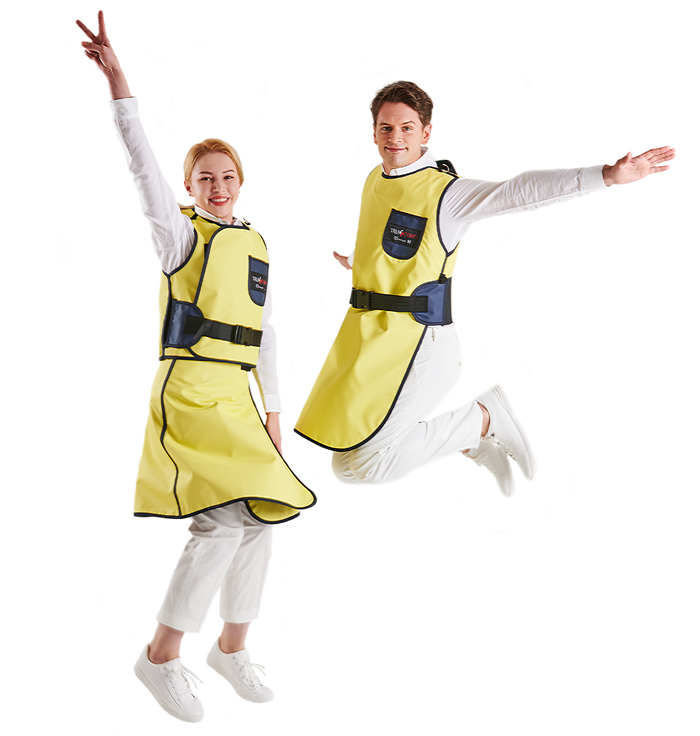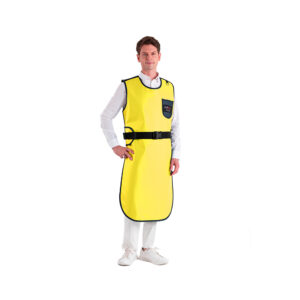A Treatise on Radiation Protection Fabrics
Traditionally, lead used to be considered the only effective element regarding radiation protection clothing. The protection level has been measured in mmPb ever since the first clothes were manufactured. This data shows the protection an element provides compared to a lead plate which would provide the same level of protection. For example, 0.5mmPb means that the fabric in question gives the same protection as if it were 0.5mm thick lead.
Lead still counts as one of the most effective elements regarding radiation protection. However, lead has some serious drawbacks, too.
First of all, lead products are considerably heavy. Wearing lead clothing for a long time burdens the body parts holding the weight (in most cases, the shoulders). Over the years, the frequent wearing of lead clothing may cause health problems. Most lead products are rigid and inflexible, therefore they are uncomfortable to wear.
Moreover, lead is a hazardous material: the regulations of its disposal are strict, which increases the costs in a long term. Each year more than 400,000 kg of toxic lead waste is produced by radiation protection clothing users in the world. Recycling this metal is complicated or impossible in most cases.
Lead can be dangerous during it is worn, too. If a protection shield or suit becomes damaged, some dust of lead may enter the air, which also has toxic effect both on the medical staff and the patients.



